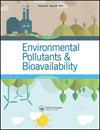Effects of storage on the sequential extraction of micronutrients and trace elements in fruit and vegetable residue flour
Q3 Chemical Engineering
引用次数: 2
Abstract
Abstract Sequential extraction consists of the use of a number of extractors with different chemical properties that are progressively applied to a sample. The objective of this study was to evaluate the influence of sequential extraction of Cu, Fe, Mn, Mg and Zn from fruit and vegetable residue flour during storage for up to 60 days. The following extractors were applied: 1M calcium chloride, 0.1M acetic acid/5% ammonium acetate (pH 5.0), 0.5M acetic acid and 0.5M hydrochloric acid; the storage times were 0, 30 and 60 days. Storage for up to 60 days did not affect the total content of the metals. However, changes were observed in the chemical structure of the sample, which influenced the profile extraction of the metals. At least five distinct chemical species of each metal were analysed, which could influence the bioavailability and metabolic processes inherent in the sample itself.贮藏对果蔬渣粉中微量营养素和微量元素序贯提取的影响
摘要顺序萃取包括使用许多具有不同化学性质的萃取器,这些萃取器逐渐应用于样品。本研究的目的是评价在果蔬渣面粉贮存长达60天的过程中,顺序提取铜、铁、锰、镁和锌的影响。采用1M氯化钙、0.1M乙酸/5%乙酸铵(pH 5.0)、0.5M乙酸、0.5M盐酸;贮藏时间分别为0、30、60 d。储存60天不影响金属的总含量。然而,样品的化学结构发生了变化,这影响了金属的剖面提取。每种金属至少有五种不同的化学物质被分析,这可能会影响样品本身固有的生物利用度和代谢过程。
本文章由计算机程序翻译,如有差异,请以英文原文为准。
求助全文
约1分钟内获得全文
求助全文
来源期刊
CiteScore
1.62
自引率
0.00%
发文量
0
审稿时长
1 months
期刊介绍:
Chemical Speciation & Bioavailability ( CS&B) is a scholarly, peer-reviewed forum for insights on the chemical aspects of occurrence, distribution, transport, transformation, transfer, fate, and effects of substances in the environment and biota, and their impacts on the uptake of the substances by living organisms. Substances of interests include both beneficial and toxic ones, especially nutrients, heavy metals, persistent organic pollutants, and emerging contaminants, such as engineered nanomaterials, as well as pharmaceuticals and personal-care products as pollutants. It is the aim of this Journal to develop an international community of experienced colleagues to promote the research, discussion, review, and spread of information on chemical speciation and bioavailability, which is a topic of interest to researchers in many disciplines, including environmental, chemical, biological, food, medical, toxicology, and health sciences.
Key themes in the scope of the Journal include, but are not limited to, the following “6Ms”:
Methods for speciation analysis and the evaluation of bioavailability, especially the development, validation, and application of novel methods and techniques.
Media that sustain the processes of release, distribution, transformation, and transfer of chemical speciation; of particular interest are emerging contaminants, such as engineered nanomaterials, pharmaceuticals, and personal-care products.
Mobility of substance species in environment and biota, either spatially or temporally.
Matters that influence the chemical speciation and bioavailability, mainly environmentally relevant conditions.
Mechanisms that govern the transport, transformation, transfer, and fate of chemical speciation in the environment, and the biouptake of substances.
Models for the simulation of chemical speciation and bioavailability, and for the prediction of toxicity.
Chemical Speciation & Bioavailability is a fully open access journal. This means all submitted articles will, if accepted, be available for anyone to read, anywhere, at any time. immediately on publication. There are no charges for submission to this journal.

 求助内容:
求助内容: 应助结果提醒方式:
应助结果提醒方式:


